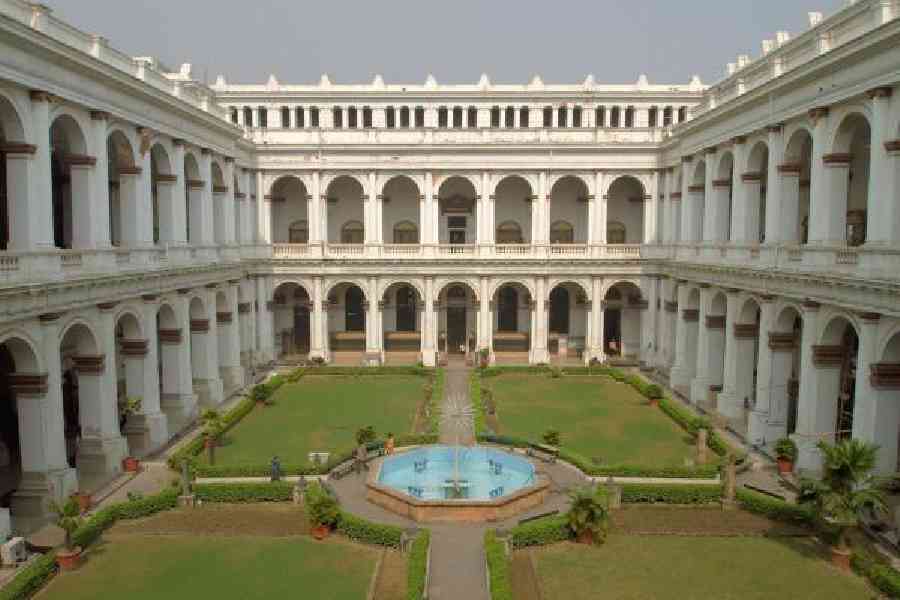Several departments of the Indian Museum have been operating without curators for over ten years. The arts, anthropology and archaeology sections have had no curators for a long time, key officials said.
A curator or a keeper, as the position is called in the Indian Museum, is someone in charge of the collection, documenting it, taking care of it and sending objects for conservation when needed, selecting objects for exhibition, displaying them and creating content around them.
They are also responsible for the objects travelling out of the museum on loan for display in exhibitions abroad or elsewhere within the country. They also have access to the museum’s strongroom, which holds the priceless collection.
The present director-general of the National Council of Science Museums (NCSM), Arijit Dutta Choudhury, has been holding the additional charge as director of the Indian Museum for several years.
The museum has had no full-time director for several years now. Dutta Choudhury said the museum had advertised for the curator posts for the different departments. “It is difficult to find appropriate candidates for the job. But we are still looking and the recruitment process is on,” said Dutta Choudhury.
A source said that the Indian Museum should have no dearth of getting expert personnel.
“They can get any qualified person from any of the museums under the central government,” said a city-based museum professional, adding the Indian Museum, under the culture ministry, has by far the largest funds available to them. The Indian Museum, currently, is in the process of renovating nine galleries at the cost of ₹26 crore.
The museum also has vacancies for deputy and assistant keepers in the three sections mentioned.
Deputy keeper of the arts section, Neeta Sengupta, passed away about two years ago leaving the post vacant till now. Arnab Basu, a senior technical assistant in the art section, also passed away last year, leaving the section without full-time staff.
The assistant or deputy keepers of archaeology and anthropology sections have retired and their replacements have still not been found. Sources say, in total the Indian Museum has 152 vacant posts.
When asked how the collections of these sections are maintained without any full-time personnel, Dutta Choudhury said: “We are severely short-staffed and we are trying to fill up the positions. Today the museum space has transformed from what it used to be. The display and curation are supplemented with technology. We need somebody with the necessary expertise.”
The museum recently advertised for the posts of Hindi translator, modeller, assistant librarian and guide lecturer. Sayan Bhattacharya, the erstwhile education officer, has been promoted to the position of deputy director. Sources say a crop of young museum professionals have been recruited on a contractual basis for two to three years to help in the running of the museum.
A veteran in the field of museums said the culture ministry has been assigning a single person to two or even three institutions in leadership positions for the past six to seven years. Cases in point are the Indian Museum and also the Victoria Memorial Hall, where Samarendra Kumar is holding additional charge as secretary and curator, apart from being deputy director-general of the National Council of Science Museums (NCSM).
The curatorial posts have all become contractual posts. In the private space, however, qualified museumologists with training from premium institutes both in India and abroad, are being picked up by private galleries and museums like MAP in Bangalore or Kiran Nadar Museum in Delhi or the Jodhpur Museum.
The culture ministry today is putting a lot of emphasis on technologies like projection mapping, augmented reality and virtual reality to supplement the displays, said a source. Research and upkeep of real objects is taking a back seat.
“Curators should be spending time researching objects, their provenance, curating well-researched exhibitions,” he said.
Collections in the decorative art section, which is languishing without a curator, include a huge collection of ivory objects along with different schools of textiles. The artefacts of this gallery came from various colonial exhibitions where the dazzling opulence of the Orient was on show. The Lord Carmichael collection and the Rai Manilal Nahar Bahadur collection (1927-1928) comprising paintings, miniatures, zed objects, textiles and Tibetan artefacts are here.
“Saris and textiles need to be on rollers or laid flat on surfaces to keep the weave intact. The displays need to be changed and preserved properly,” said a curator of a city museum.











